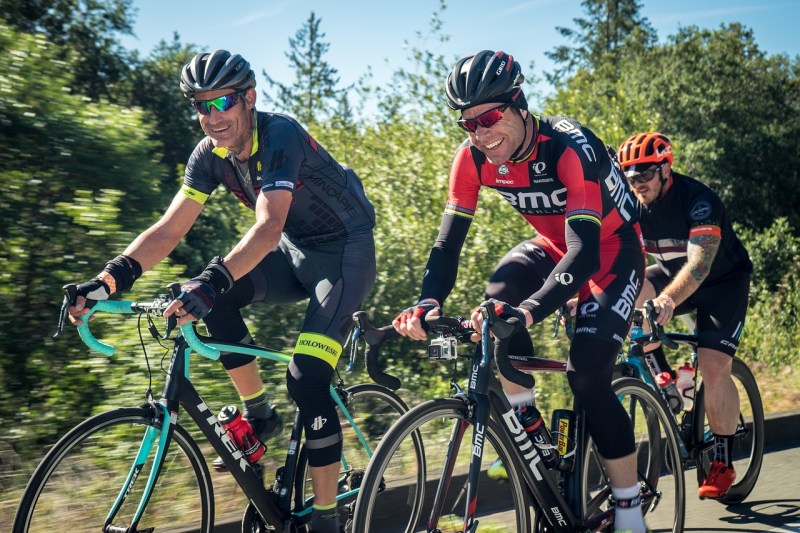
Summer is finally here, and that means embracing the radiating sun and soaring temperatures. Along with that, it’s time to fully immerse ourselves in invigorating outdoor pursuits. One such activity that beautifully complements summer’s marvelous weather is cycling. Whether you’re a passionate cyclist or a curious newcomer to the world of biking, now is the opportune moment to start reaping all the benefits cycling has to offer. Better yet, even on rainy days, one can still partake in a spin class and hop in the ol’ saddle.
So how can you optimize your time spent cycling or attending spin classes? By incorporating effective strength training specifically tailored for cyclists. Yes, that’s right: strength-training exercises for cyclists. And no, we don’t just mean adding in more miles.
While the only real way to get better at cycling is by simply doing it (this goes with everything in life), integrating strength training into your routine can significantly enhance your performance while pedaling. Regardless of your ultimate goal, be it preparing for an actual race attempting to set a personal record or simply aiming to keep pace with fellow riders in a local cycling club, keeping up with classmates in spin class, or simply just wanting to maximize your potential, the exercises outlined below will fortify your muscles, augment your power, and elevate your biking prowess.
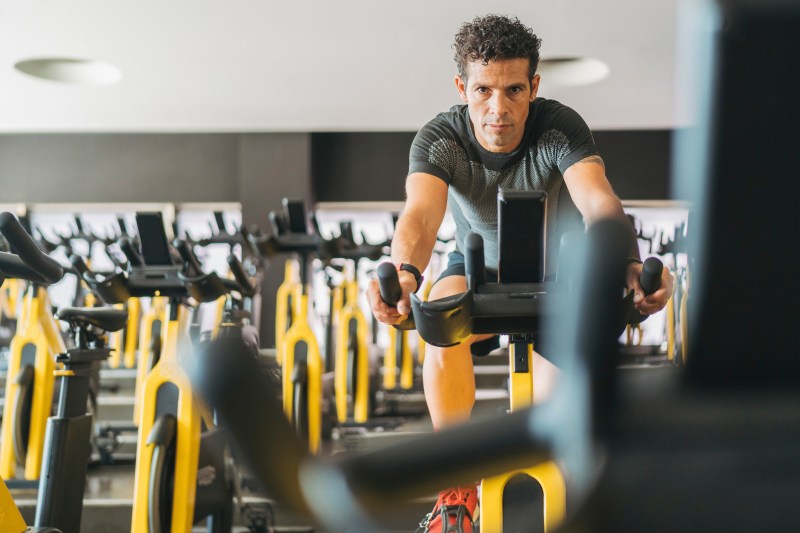
What exercises are needed for cyclists?
While there is never a one-size-fits-all when it comes to strength training, there are very similar overlapping themes that any rider can take advantage of to maximize their time spent in a saddle. Firstly, squats are exceptional for building lower-body strength and targeting the quadriceps, hamstrings, and glutes. Next, lunges help develop leg stability and balance while engaging multiple muscles. Deadlifts are effective in building posterior chain strength, including the glutes, hamstrings, and lower back. Additionally, core exercises such as planks and Russian twists strengthen the abdominal muscles, promoting stability and proper posture while riding.
Another solid alternative to cycling that you can incorporate as a low-impact training tool is the kettlebell. Kettlebell swings, when done properly, utilize your lower body and core, both of which are crucial for cycling success. Lastly, incorporating upper-body exercises like push-ups helps maintain overall body strength and balance. By integrating these exercises into your routine, you’ll cultivate the physical foundation necessary for optimal cycling performance.
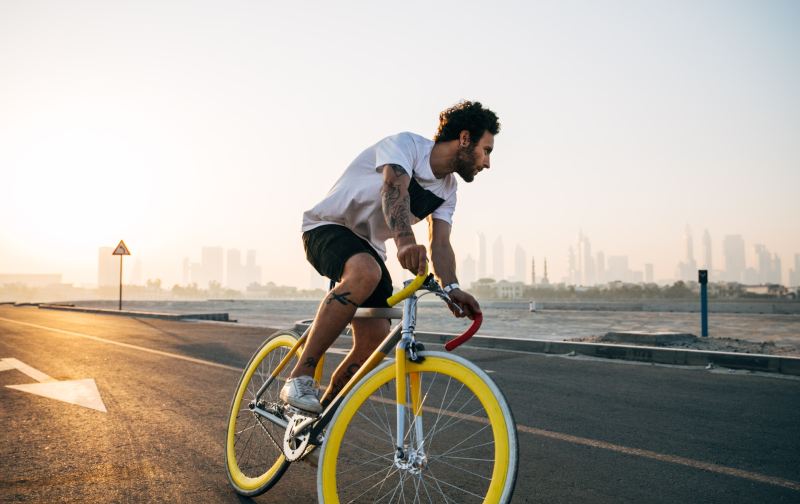
How often should you perform strength training for cyclists?
Again, this will largely be predicated on an individual basis, taking into account numerous things such as experience, goals, cycling load, and training regime, just to name a few. Accounting for the above exercises, a good starting point and rule of thumb is as follows:
- Sessions: 1–2 times per week
- Sets: 3
- Repetitions: 8–12 reps
- Rest: 60–90 seconds
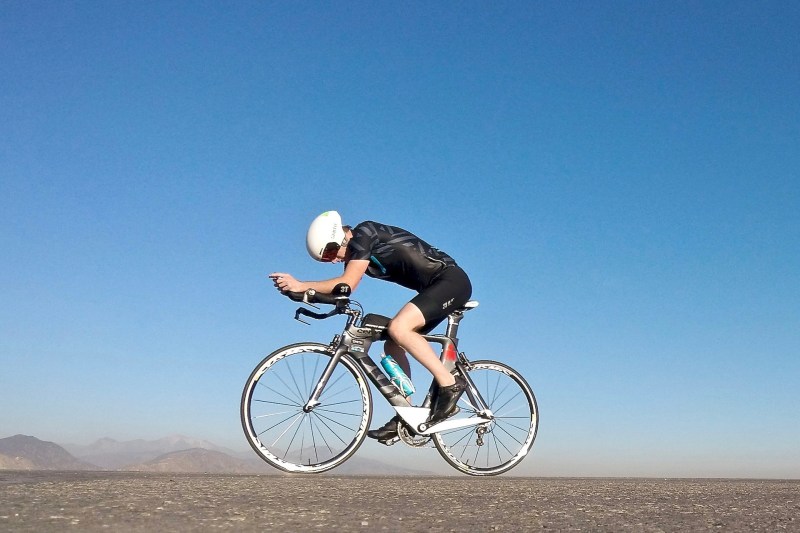
Best exercises for cyclists
While we outlined the optimal exercises above, here we’re going to further break down each exercise.
1. Squats
The squat is an excellent lower-body strength builder. This exercise can be performed as a bodyweight movement or by adding additional weights such as dumbbells, barbells, or kettlebells.
- Start off in an athletic stance, feet shoulder-width apart, weight evenly distributed across your entire foot.
- Your toes should be forward or slightly pigeon-toed.
- The squat movement starts with pushing your hips backward (hip hinge).
- Tip: Pretend as if you were sitting down in a chair.
- As your hips move backward and you begin squatting downward, your knees should track in line with your toes — knees move outward.
- As you squat, your chest should remain upward.
- Squat until legs are parallel to the floor, or slightly lower.
- Pause for a half-second.
- Drive through your heels and rise upwards, squeezing your glutes as you finish back in the starting position.
2. Lunges
Over time, many athletes and cyclists begin to develop muscle imbalances, especially when it comes to lower-body strength. Performing lunges can help you ward off leg strength imbalances, which can be vital to cycling longevity.
- Start in an athletic stance, feet shoulder-width apart, weight evenly distributed across your entire foot.
- Take a step forward with one leg, ensuring that your knee is directly above your ankle.
- Lower your body by bending both knees simultaneously, until your back knee almost or just barely touches the ground.
- Keep your front knee aligned with your toes and your back knee hovering slightly above the floor.
- Push through your front heel and engage your leg muscles to return to the starting position.
- Repeat the movement on the other leg, alternating between legs for a balanced workout.
- Aim to perform the exercise with controlled movements, focusing on maintaining proper form and balance throughout the entire range of motion.
- Start with a few repetitions on each leg and gradually increase the number as you become more comfortable and proficient with the exercise.
3. Deadlifts
The deadlift is a technically challenging exercise that, when performed properly, can have one of the greatest ROI’s of any movement for an athlete looking to build strength. A good starting point is performing this exercise with dumbbells or a trap bar before moving on to a barbell.
- Begin by standing with your feet hip-width apart, ensuring that the barbell is centered in front of you, approximately 1 inch away from touching your shins.
- Bend your knees and hinge at the hips to lower your body down, maintaining a flat back and a neutral spine.
- Grasp the barbell with an overhand grip, hands slightly wider than shoulder-width apart.
- Engage your core by bracing your abdominals, and lift the barbell by extending your hips and knees simultaneously — focus on pushing the ground away, ensuring optimal leg drive.
- Keep your back straight as you lift, focusing on using your leg and hip muscles to generate the power.
- Stand tall, fully extending your hips and knees at the top of the movement.
- Lower the barbell back down by reversing the movement, hinging at the hips, then squatting it back down once the barbell clears your knees.
- Maintain control throughout the descent, keeping your back straight and your core engaged.
- Repeat the movement for the desired number of repetitions, ensuring proper form and technique throughout.
4. Planks
When done properly, all plank variations do a wonderful job of working more than just the rectus abdominis (the washboard muscles of your core) as they work out your entire core. Engaging your quads, glutes, and lats is an added bonus to truly maximize the exercise.
- Start by positioning yourself on the floor, face down.
- Place your forearms on the ground, ensuring that your elbows are directly beneath your shoulders.
- Extend your legs straight behind you, resting on the balls of your feet.
- Engage your core muscles by drawing your belly button in toward your spine.
- Lift your body off the ground, creating a straight line from your head to your heels.
- Keep your neck relaxed and your gaze directed slightly in front of you.
- Maintain this position, ensuring that your body remains aligned and your core is engaged.
- Aim to hold the plank for a specific duration, gradually increasing the time as you build strength.
- Remember to breathe steadily throughout the exercise while keeping your core engaged, avoiding any unnecessary tension or strain.
- To release the plank, gently lower your body back down to the starting position.
5. Russian twists
A wonderful exercise to improve rotational power, the Russian twist is a simple exercise that can be done with your own body weight or by holding onto a dumbbell, medicine ball, or anything weighted.
- Start by sitting on the ground with your knees bent and your feet flat on the floor.
- Lean back slightly while maintaining a straight spine, forming a V-shape with your torso and thighs.
- Lift your feet off the ground, balancing on your sit bones.
- Clasp your hands together in front of your chest, or hold a weight or medicine ball for added resistance.
- Engage your core muscles by drawing your belly button in toward your spine.
- Begin the exercise by rotating your torso to one side, bringing your hands or the weight across your body.
- Pause briefly at the end of the movement, then rotate your torso to the opposite side.
- Continue alternating sides in a controlled and fluid motion.
- Keep your feet lifted throughout the exercise, maintaining balance and stability.
- Aim for a specific number of repetitions or a designated time duration.
- Remember to breathe steadily and maintain proper form throughout the exercise.
6. Kettlebell swings
Strength, cardio, muscular endurance — there really isn’t anything a kettlebell swing cant improve when it comes to athletic performance. A dynamic movement that is low-impact, this is an ideal exercise for all cyclists to utilize.
- Begin by standing with your feet slightly wider than shoulder-width apart, toes pointed outward at no more than a 45-degree angle.
- Place the kettlebell on the floor about a foot in front of you.
- Hinge at the hips and bend your knees, reaching down to grip the kettlebell handle with both hands.
- Keep your back flat and engage your core muscles.
- To start the movement, “hike” the kettlebell through your legs like an NFL center would snap a football to a quarterback.
- From there, in one explosive motion, drive your hips forward and swing the kettlebell up to shoulder level.
- Focus on using the power generated from your hips and glutes to propel the kettlebell — your lats should be engaged, but your arms are only there to hang onto the kettlebell (if you feel it in your arms, you’re probably doing the move improperly).
- As you reach the top of the swing, squeeze your glutes and tighten your core.
- Allow the kettlebell to “fall” back down between your legs as you hinge at the hips while pushing your rear backward, and slightly bend your knees.
- Maintain control throughout the movement, ensuring that your back stays flat and your core remains engaged.
- Repeat the swing for the desired number of repetitions, maintaining proper form and technique.
7. Push-ups
Almost everything cyclists do improves lower-body and core strength. Lest we forget about the upper body, though, something as simple as a bodyweight push-up is an effective and simple movement when it comes to cycling exercises.
- Start by positioning yourself face-down on the ground with your hands slightly wider than shoulder-width apart.
- Extend your legs straight behind you, resting on the balls of your feet.
- Place your hands firmly on the ground, fingers pointing forward, and “screw” your palms outward, fully engaging your lats — your elbows should be at a 45-degree angle or less from your body.
- Engage your core muscles by drawing your belly button in toward your spine.
- Press through your palms, visualizing pushing the ground away, keeping your body in a straight line from your head to your heels until your arms are almost locked out — that is one repetition.
- Slowly lower your body by bending your elbows, keeping them close to your sides, and maintaining a controlled movement.
- Descend until your chest is just above the ground or as low as you can comfortably go.
- Pause briefly in this lowered position, then push through your palms to extend your arms and raise your body back to the starting position.
- Maintain proper form throughout, keeping your core engaged and your body in a straight line.
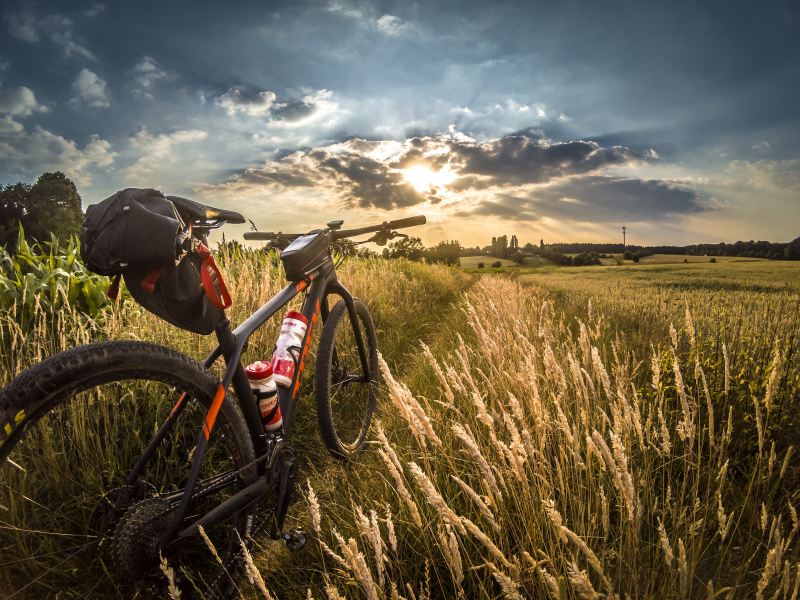
Exercises for cyclists
While taking spin classes, hitting the open road on your road bike, or heading slightly off-grid for some mountain biking are all excellent workouts in and of themselves — and like we said, the only way to actually get better at biking is by biking — adding in some supplemental strength exercises can ultimately maximize your bike workouts. These strength-training exercises for cyclists are some of the best of the best around. Add them to your routine and give them a try!



